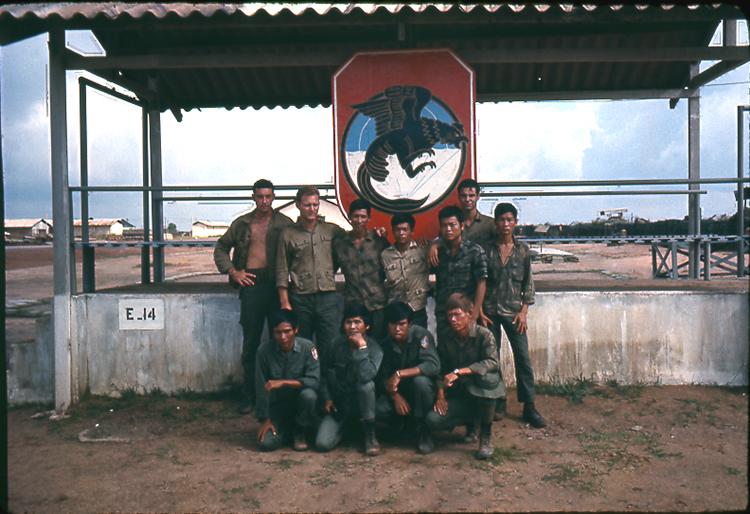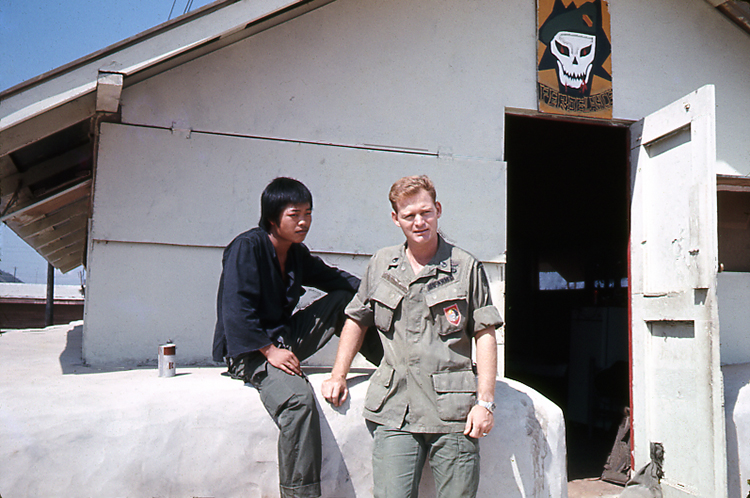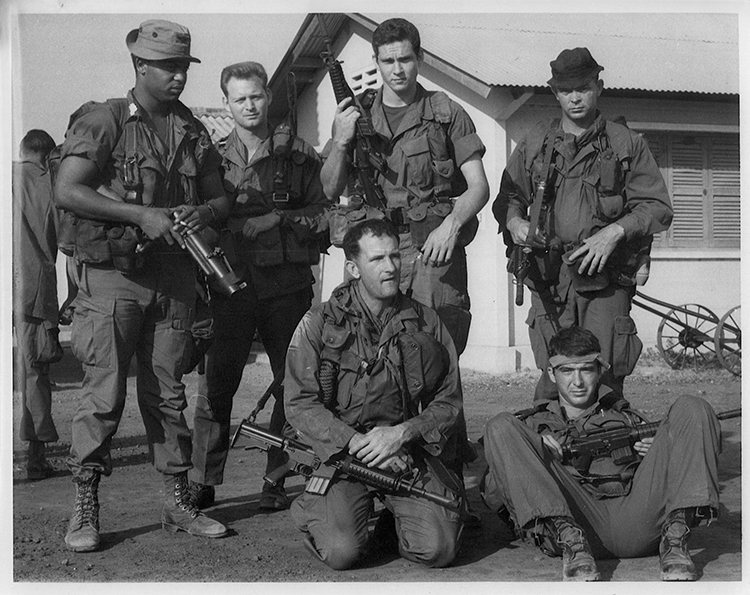Modern Forces: What made you join Special Forces and then apply for SOG, did you know what it was before you joined?
Leon Sonnenburg: I wanted to be an Infantry soldier. I was researching Army specialty fields in materials provided by the local recruiter and became aware of Special Forces (SF). I was impressed and decided that was what I wanted to be. I met entry requirements for SF, so I attended Infantry training, Airborne training, and then the SF Qualification Course. When I didn’t receive orders to Vietnam right away, like many SF soldiers, I requested orders, and Mrs Alexander quickly complied.
I wasn’t aware of MACSOG when I arrived in Vietnam. At the reception center I met more seasoned and experienced SF soldiers, many of whom had served with, and were returning to, MACSOG assignments. I was convinced to ask for assignment to CCN, but found I was involuntarily assigned to CCS. A soldier could be involuntarily assigned to MACSOG, but had to volunteer to run Recon missions. I worked in the Communications Center for a couple of weeks, then requested assignment to Recon Company.
My CCS/CCN time was from late 1969 to the end of 1970. During 1971 I was assigned to B-53 (Camp Long Thahn) as an instructor for the Reconnaissance Team Leader (10) School.
My final assignment in RVN (around January to the end of November 1972) was with a non-MACVSOG unit, FANK TRAINING COMMAND - Phuoc Tuy Training Battalion (PTTB) at Long Hai, RVN, where, along with soldiers from Australia and New Zealand, we trained Cambodian Army Infantry Battalions.
Modern Forces: Which teams did you run with (and years) and in what role?
Leon Sonnenburg: From the latter part of 1969 (Oct-Nov) to around Jul of 1970, I was Assistant Team Leader (11) and then Team Leader (10) of Recon Team (RT) Wedge at CCS Banmethuot. When CCS was downsized, in the middle part of 1970, RT Wedge, with most of its personnel went to Danang, CCN. The CCN TOE was three Americans per team, as opposed to two Americans per team at Banmethuot. Three of us formed a new team, RT Fer-de-Lance. I was the Assistant Team Leader (11) on that team.

Modern Forces: Can you recall a mission that stands out?
Leon Sonnenburg: No

Modern Forces: Were your indigenous team members Montangyard, Nung or Vietnamese?
Leon Sonnenburg: Both RT Wedge and RT Fer-de-Lance, were comprised of Nung. As commented earlier, most of them from the disbanded RT Wedge from CCS.

Modern Forces: Did any of them make it out to the States and if so have you ever been in touch?
Leon Sonnenburg:I don’t know if any of them left Vietnam.
Modern Forces: Did you have a weapon choice or preference?
Leon Sonnenburg: I preferred the XM177 E-2 (CAR-15) because it was light, short, you could carry large amounts of ammunition, and it was easy to fire instinctively and accurately.

Modern Forces: Did you ever test any experimental equipment or weapons?
Leon Sonnenburg: We tested a 38 cal silenced revolver, but not operationally. Just not practical for the jungle.
Modern Forces: did you ever carry a back-up weapon, if so what was this?
Leon Sonnenburg: I did not carry a back-up weapon.
Modern Forces: Did you or your team ever carry any foreign weapons, AK47 or RPD? And if so how were magazines/drums/belts carried?
Leon Sonnenburg: The Nung point man/Indigenous Team Leader (01) always wore NVA uniform and carried an AK47 expecting he would most likely be the first of the team to be spotted or make accidental visual contact with the enemy; that would, hopefully, create enough doubt in the enemy to give him, and us, time to take appropriate action.
Modern Forces: Did you have a standard equipment set-up in your team? Yes. Especially critical and intelligence sensitive items:
Leon Sonnenburg: Maps, note pad, primary and secondary radios and KAK pad, emergency signaling equipment, ……….. were carried by each American in a manner and location that they could be located and recovered rapidly in an emergency.
Modern Forces: Did your team have any unique traditions or quirks in its equipment set-up?
Leon Sonnenburg: No. We were pretty conventional and compliant in our equipment configuration with most of the other Recon Teams at CCS.
Modern Forces: Did you have anything to do with any of the SOG HALO or Static line jumps during the war?
Leon Sonnenburg: RT Fer-de-Lance underwent static line parachute training at Camp Long Thanh sometime in the latter part of 1970. We did not receive a parachute mission upon return to CCN however.
Modern Forces: Did you carry a side arm and if so how was is carried, you often see them in books but can’t seem to see any holsters (hip or shoulder) in the pictures I have?
Leon Sonnenburg: I did not carry a side arm. I considered a side arm an encumbrance.
Modern Forces: Its well known that SOG used black spray paint to camouflage uniforms and equipment I have seen a picture of RT New York in Frank Greco’s second book that appears to show gear camo’d with green and black spray paint. Did you ever see this type of green/black spray paint in use?
Leon Sonnenburg: Yes. The only camouflaged uniform available at that time was what was called “Tiger Fatigues”. Tiger Fatigues were manufactured for the smaller Asian frame and were too small to be worn by most Americans. The issue jungle uniform of the time was OD Green, rip-stop nylon. A really great uniform, but there was no camouflage pattern. Many of us used black spray paint to put lateral lines of darker color across the uniform, and our rucksacks and equipment, in an attempt to replicate shadow, disrupting the outline and allow us to better blend into the jungle background.
Modern Forces: What did you do when you left the army, was this a career for you?
Leon Sonnenburg: I remained in the Army (Special Forces) until retirement in November 1984, with 22 years active duty service (18 in SF). After leaving the Army I became involved in the Corporate Security field, and still work in that area today.

|

